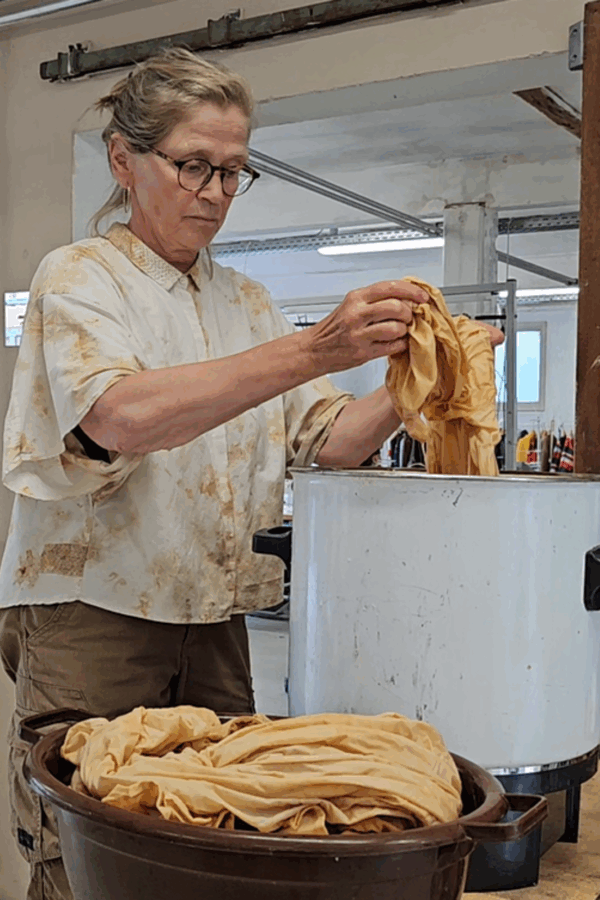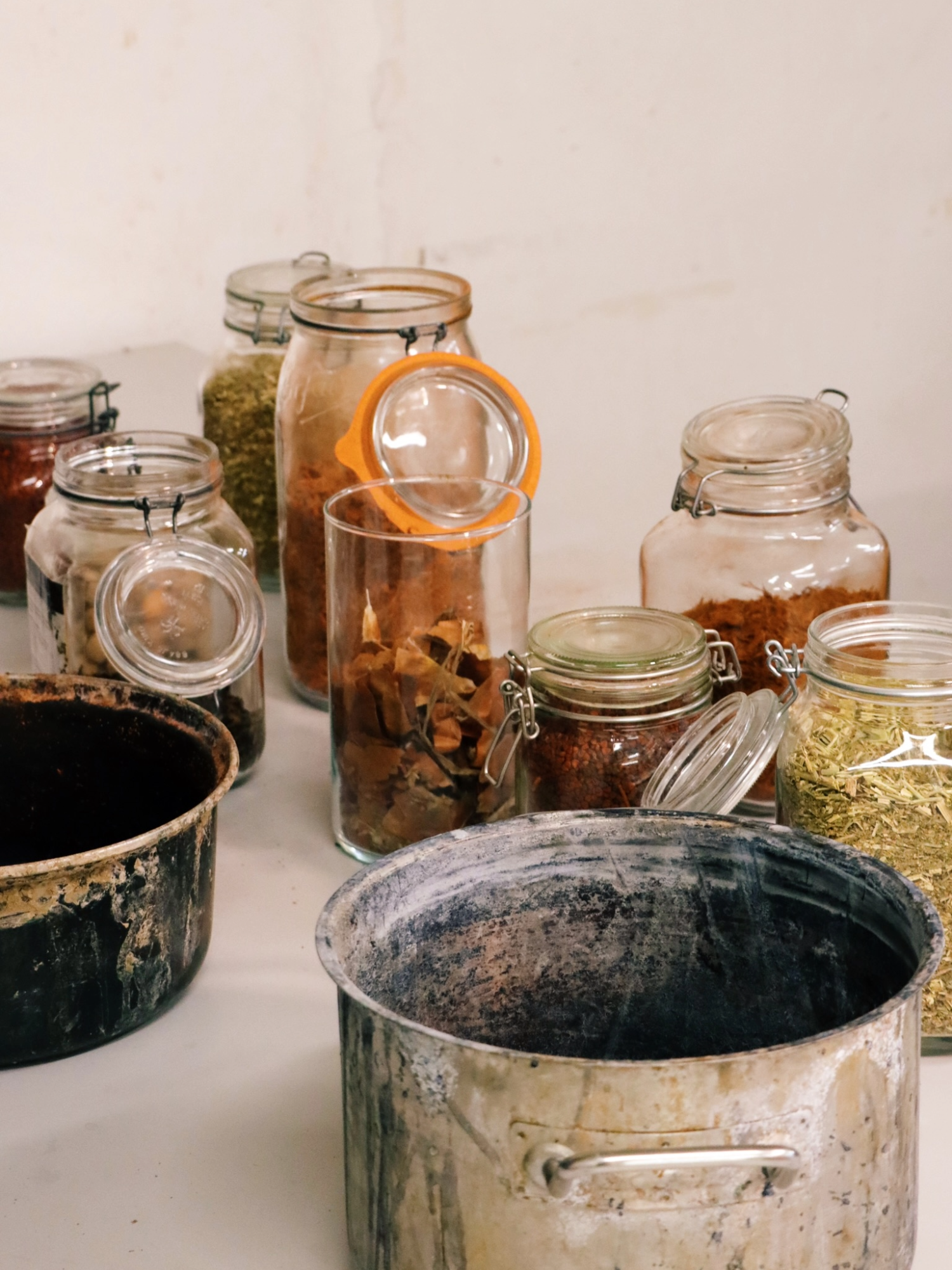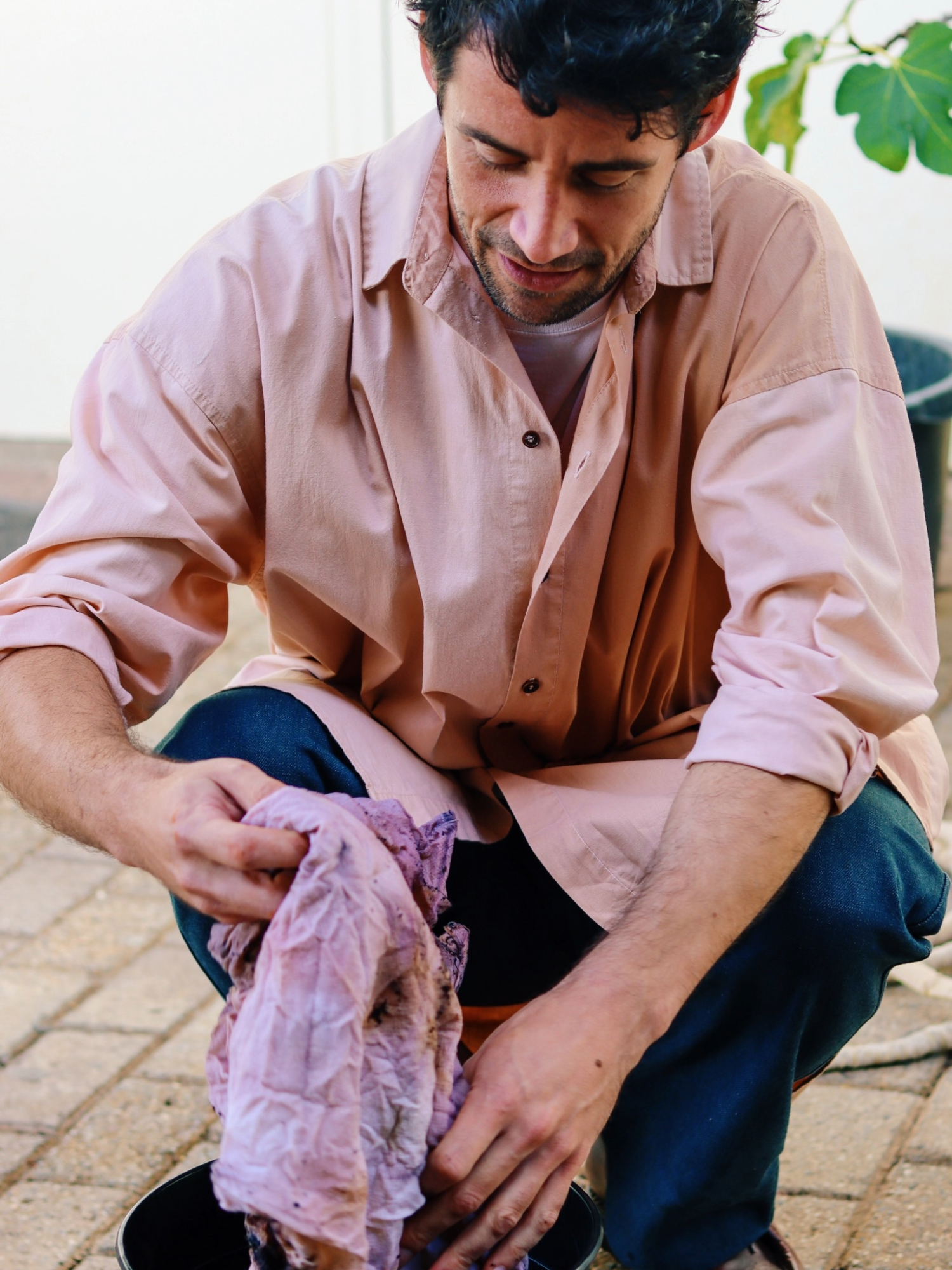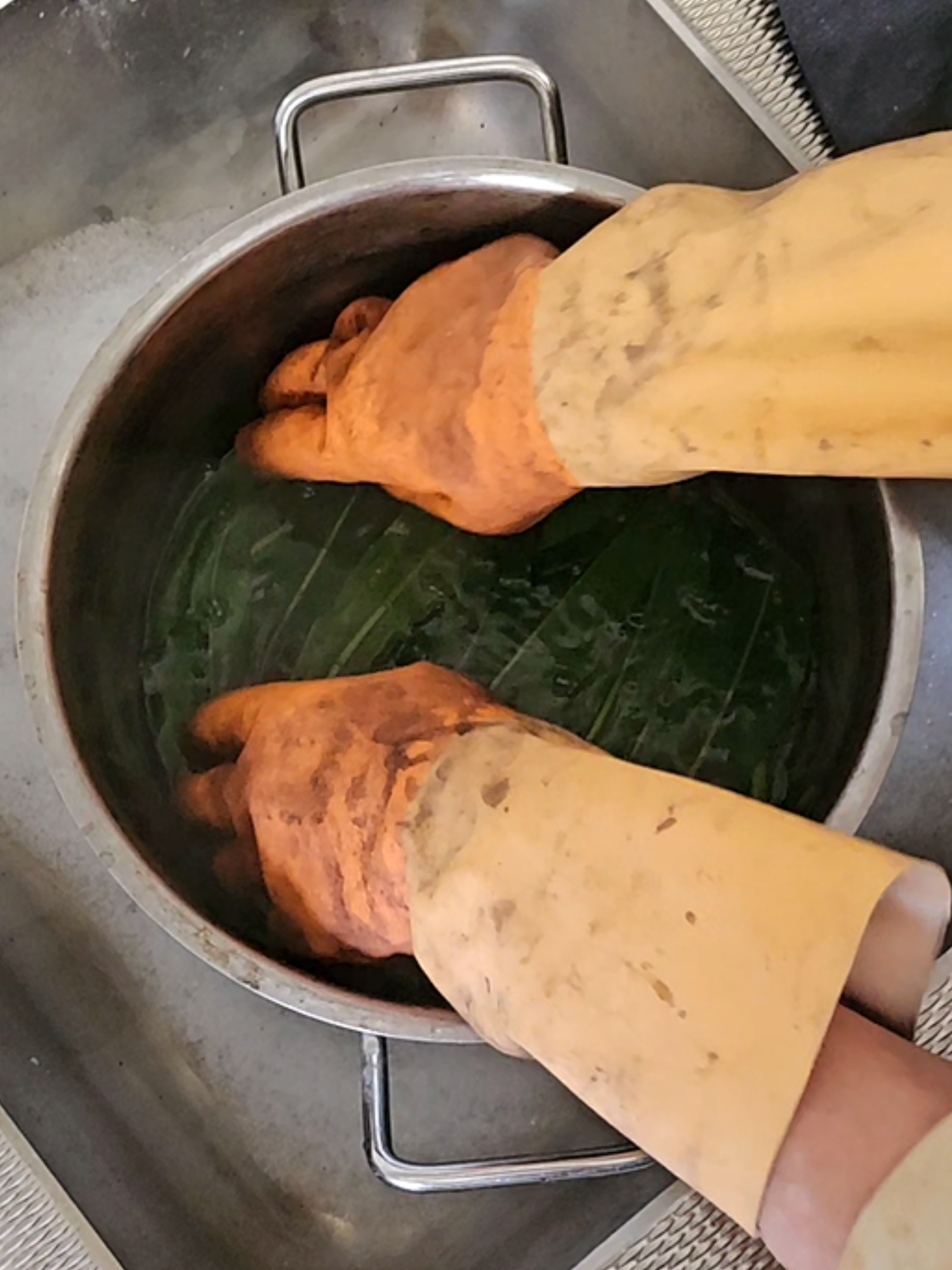At Hul le Kes, design is never just about garments. It is about philosophy, process, and people. Creative Director Sjaak Hullekes and Hillie, once a Recovery Studio participant and now a volunteer, reflect on how natural dyeing and recovery intersect. Their voices together reveal how both textiles and people can be given a second life.
For Sjaak, the act of working with plant-based dyes is an extension of his design philosophy. “Natural colorants evolve over time; they fade and transform with wear and washing. That change is not a flaw, it is life itself. It reminds us to accept natural processes instead of trying to control everything. Only by doing so can we begin to live more sustainably.”
Hillie experiences this same transformation in a very personal way: “Dyeing gives me a sense of adventure without leaving home. I move between intuition, senses, and knowledge, and I marvel at how materials and plants react to one another. At the same time, it grounds me and helps me let go of the illusion that life can be controlled.”


Both Sjaak and Hillie celebrate imperfection as beauty. “Our dyeing is seasonal, just like the crops themselves,” Sjaak explains. “Colors emerge not from trend forecasts but from what nature makes available at that moment. That makes our work fundamentally different from the wider fashion industry.”
Hillie adds that her favorite plants are those growing locally, particularly woad: “From cultivating it to extracting indigo, to watching fabric turn from pale blue to deep denim black; it is like alchemy. It feels like working with abundance found right here in my environment.”
For Sjaak, these natural shifts are crucial:
“Using byproducts like onion skins or avocado pits connects our dyeing to circularity. Just as our textiles are rescued post-consumer fabrics, the dye itself often comes from what others consider waste. Every fabric absorbs color differently, woven tightly, loosely, or aged, making every garment unique, just as every person is unique.”


The Recovery Studio is where their philosophies converge. “I missed the human aspect of care in my fashion career,” says Sjaak, who trained as a social worker before becoming a designer. “In the Recovery Studio, I see people gaining confidence, and that brings me closer to the human side of fashion. A Hul le Kes garment contributes to someone’s reintegration as much as it does to a wardrobe.”
Hillie knows this from the inside. “Here, my intuitive way of working is valued, whereas in previous workplaces it was seen as a threat. That acceptance has helped me claim my space, and it makes me feel that I matter.”
One of her most powerful memories came during her transition from participant to volunteer.
“Because of my PTSD, I had a deep distrust of authority, even here. I feared that if I showed my true self, I would not be accepted. When I shared this with Sjaak, he simply said: ‘Hillie, I am deeply inspired by you. They did not understand you. What more can we do to value you?’ That moment will always move me, it was a turning point in my healing.”


This exchange reflects the mutual inspiration between designer and maker. “Some people in recovery come with entirely new ideas or techniques, and that influences me as a designer,” says Sjaak. For him, creativity is never a one-way street; it flourishes in dialogue with others.
For Hillie, sharing her knowledge is just as essential: “I no longer work from the old paradigm of ‘time is money.’ Instead, I work creatively from inner drive,
sharing my experiences so others can find their own strength. It is deeply fulfilling to invite others to tap into their talents.”
Both see natural dyeing as a metaphor for life itself. Sjaak explains, “My dream is that more people will embrace the natural imperfections of both textiles and humans. Even if the big industry never adopts this approach, small players can lead the way. Consumers have the power to choose differently.” Hillie echoes this in her own words:
“The joy of discovering beauty in what grows around me, in plants others overlook, is also the joy of discovering that I myself can belong and contribute. That is healing.”
The story of Hul le Kes is not complete without its community. Every garment we create carries both the beauty of craft and the resilience of people.
There are many ways to join this journey:
By wearing Hul le Kes, you carry the spirit of natural imperfection and social care into your everyday life.
By visiting our Arnhem Store or our retail partners worldwide, you connect to garments that are both timeless and meaningful.
By choosing collaboration (as a retailer, creative, or supporter) you help strengthen a circular and inclusive fashion system.
And by stepping into the Recovery Studio, as a participant or volunteer, you can directly experience and contribute to the healing power of making.
At Hul le Kes, giving new life to textiles and to people is a quiet, ongoing practice that shapes everything we do.
More information about these subjects can be found at the following pages about: Natural Dyeing, Social Enterprise and Circularity & Sustainability.